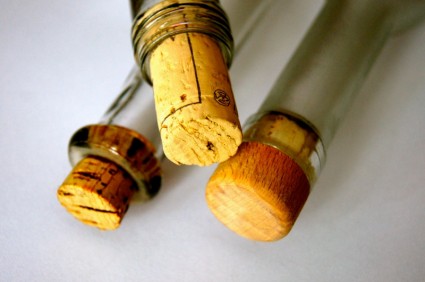
by Lorri | Jun 3, 2015 | UnCorked
Many question exactly what is being added to wine beyond the expected yeast and grapes. The additives used in wine production, similar to food production, are strictly limited by regulations that vary from country to country. Most wines remain stable after bottling and don’t need many additives other than those to deter oxidation and microorganisms. And from a food safety angle, most will find it comforting to know most bacteria cannot survive in wine because of the alcohol and natural acidity.
One of the most common and confusing additives is sulfur dioxide.
Many use the term “sulfuring” for this process, but it’s misleading because it is not sulfur but sulfur dioxide being added. This confusion is most likely from the technique used to sterilize empty casks. In the past, winemakers lowered a piece of burning sulfur into the cask. The sulfur dioxide produced in this reaction dissolved into the residual water in the cask, thus sterilizing it. Candles are used today but generally a powder or gas form is added.
As with most chemicals used in food production, sulfur dioxide is harmless when used in the correct levels. It is also used in fruit juices, dried fruit, cured meats and sausages, pickles and molasses. It is a very useful additive but does have disadvantages; it is an irritant/allergen for some consumers. This is the reason for the U.S. labeling statement: “This wine contains sulfites.”
Sulfur dioxide helps prevent some wine faults. The most common is oxidation (browning). It is key that oxidation be kept to a minimum in order to maintain freshness. Oxygen sometimes dissolves in wine, causing browning and creating an off flavor. Sulfur dioxide is used to prevent this reaction. It is also used for antiseptic purposes. Acetobacter may be the most common form of bacteria attacking wine and turning it into vinegar. This bacteria needs oxygen to flourish, but a dose of sulfur dioxide followed by filtration will rid the wine of the invader.
It can also be used for correcting a wine after oxidation. It may be added to freshen “tired” wines that may have suffered a slight degree of oxidation. This usually occurs due to poor production and handling. It’s important to remember this addition isn’t a magic cure, because it only helps maintain a quality factor but can’t improve quality that didn’t already exist.
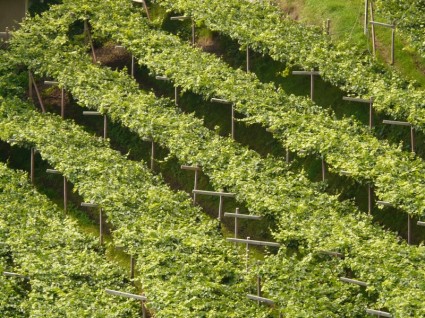
by Lorri | May 20, 2015 | UnCorked
I am asked frequently about homegrown Arkansas wines — my opinion on quality, future of the industry and do I buy them?
Recently I was invited to do a quick three- or four-second window on an Arkansas promotion for AETN about the Arkansas Wine Trail. It gave me a chance to re-examine the growth and opportunity we have in our own backyard.
Many Arkansas wineries are not only producing indigenous grapes but also sourcing from grape-growing regions around the United States. I personally enjoy the wines from indigenous grapes that are homegrown and unique to our state. The Cynthiana, Muscat, Norton and delicate fruit wines are worth the exploration and enjoyment.
Exploring those unique wines is as easy as exploring The Arkansas Wine Trail.
The Arkansas Wine Trail extends from Eureka Springs to Altus and Paris to Hot Springs. There are many opportunities to explore not only the wineries along the trail, but also the state’s spectacular scenic vistas and towns. You could make a weekend getaway at almost any location along the way.
Also worth noting is the Arkansas Wine Country 100 Bike Tour (this year’s event took place in March). The annual event offers 17-, 35-, 80- or 100-mile routes. You can pick your pace and route. The tours begin and end at the Post Familie Winery in Altus. One of the benefits of this perspective of seeing our wine regions is the opportunity to bike through a scenic and outdoor experience along the Arkansas River Valley. The various routes pass through Altus, Ozark, Paris, Subiaco, Scranton, Hartman and Coal Hill.
Just as we are experiencing an explosion of craft beer in Arkansas, I think we will continue to see new and up-and-coming wineries on the Arkansas Wine Trail.
My answer to the questions about Arkansas wines: Yes. Arkansas produces a variety of fine, quality wines, there’s lots of exciting growth happening, and I do buy and drink Arkansas wine.
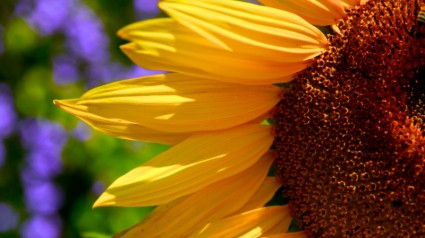
by Lorri | May 13, 2015 | UnCorked
I’m asked the question a lot: “Are you a red or white wine drinker?” Of course I drink both, but as the summer season arrives, I admit to preferring white for everyday drinking.
These are a few of my top picks for refreshing white varietals.
CHARDONNAY
This is a love it or leave it grape variety for many consumers. It’s known as “the king” and “the Coca-Cola of the wine world.” Chardonnay tops the list for the most consumed grape variety, topping out all red and other white grapes. It comes in different shapes and sizes. In warmer weather growing conditions it exhibits ripe, tropical fruit aromas such as pineapple, mango, peaches and pears. In cooler climates such as France’s Chablis, the wines are more delicate, citrusy with a slight honey character.
THE VALUE
- 2014 Bogle Chardonnay, California (about $12 retail)
THE SPLURGE
- 2014 Force of Nature Chardonnay, California (about $24 retail)
VIOGNIER
This underrated white grape is beautifully aromatic and can be an ideal blending partner for chardonnay. On its own viognier overflows with its intoxicating smell of apricots, fresh flowers and oranges. On the palate it is fuller-bodied than most whites but has a well balanced mouth feel and low acidity. It shines in France’s Rhone Valley but exceptional viogniers are also produced in Chile, Australia and South Africa.
THE VALUE
- 2014 LaPlaya Estates Viognier/Chardonnay, Chile (about $9 retail)
THE SPLURGE
- 2013 Calera Mt. Harlan Viognier, California (about $38 retail)
CHENIN BLANC
Chenin Blanc has been referred to as “handier than a Swiss Army knife” by many because it can adapt to any production method, be it sweet, dry or even fizzy. It shares many taste similarities to sauvignon blanc, with its refreshing hints of green apple and fresh herbs. It’s at home in France’s Loire Valley, where the style can be racy, dry, luscious or sweet. You can also find Chenin Blanc in the vineyards of South Africa, where it has in the past accounted for a staggering quarter of all wine grown and produced.
THE VALUE
- 2012 Robertson Winery Chenin Blanc, South Africa (about $14 retail)
THE SPLURGE
- 2013 Clos de Nouys Vouvray, France (about $24 retail)
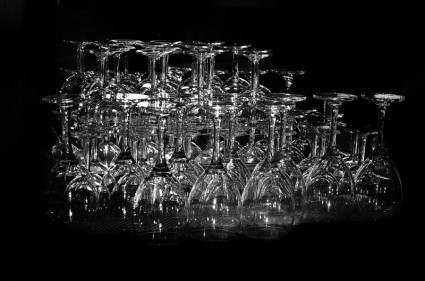
by Lorri | May 6, 2015 | UnCorked
It seems every day more and more styles of wineglasses are available. The choices can be dizzying and confusing.
I do believe different bowl sizes change the taste and enjoyment of wine. And I love setting the table for special occasions, when I bring out the glasses — white, red, dessert and cordial — for each course. But I also know many of us are simply looking for an everyday, all-purpose wineglass. Most of us rarely need numerous size glasses to relax and enjoy dinner at home.
Here are few tips for finding your ideal home wineglass.
- Clear versus color. Call me old-fashioned, but I still believe a wineglass should be clear. I know there are many trendy, fun designs and colors lining the retail shelves, but I like to see the wine in the glass. Sometimes the designs and colors of the glass take away from the experience of seeing and appreciating the wine.
- Stemmed versus stemless. In our house we do have a stemless glass, but it’s the delicate European style, very similar to a dainty water glass. The purpose of stemless glassware is debatable only because the reason you hold a glass by the stem is to prevent your hands from warming the wine and smudging the glass with fingerprints. For my ideal glass I do want a stem. There’s something about holding a traditional wineglass by the stem when you are savoring the experience.
- A dainty glass versus a thick, strong glass. Oddly, this is possibly one of the most asked questions about glassware. Many years ago I bought a set of very expensive (expensive for my budget), delightfully delicate, thin-rimmed glasses. I enjoyed my glass of wine with dinner, but the bliss was very short-lived. Even hand-washing them, they are so fragile that even a small tap on the side of the sink breaks the glass. If your dinner routine is like ours, we rarely have time to hand-wash and polish wineglasses immediately after use. Wineglasses often end up next to the Tupperware in the dishwasher. My ideal glass is less delicate and more durable. I’m not suggesting you attempt to enjoy wine out of the thick-rimmed banquet-style glassware, but try to find something in the middle.
- The curve. Most wineglass features come down to personal preference and lifestyle. But there may be one slight design feature that enhances wine in the glass no matter what the wine or price of the glass … a slight curve. There are many wineglasses available, but look for those with a slight curve at the top of the bowl. This tiny design point enhances the aromas of your wine, thus increasing enjoyment in the experience.

by Lorri | Apr 29, 2015 | UnCorked
After Uncorked’s 10th anniversary column, I received lots of feedback. Many of you asked what were the most frequent questions from readers.
Here are some of the most often asked questions. I’ll address more common questions in future columns.
What does it mean to leave wine “to breathe”?
To be clear, this process is simply removing the cork before serving. “To breathe” is not the same as decanting, which helps remove sediment, or aerating, which introduces oxygen to the wine, both of which can positively affect a wine. Letting a wine breathe by simply removing a cork and leaving the bottle on the table for an hour or two doesn’t improve, change and really affect your wine in any way. The surface to air contact is minuscule and doesn’t allow much “breathing” for your wine.
Why do certain wines increase in value after buying?
Sadly, another misunderstood concept with wine is it will all improve with age and become more expensive. A very small percentage of wines in the world is intended to age or improve with time. Most are “fine wines” where the wineries strategically intend the wine to “age” from bud break to bottling. With these wines, there is usually a very limited amount produced each year. As consumers buy and consume, it’s a general economics rule of supply and demand. Supply is hard to find and demand seeks it out.
Are sulfites in wine bad? And are sulfites to blame for my headache?
Sulfites are naturally present in many things we consume (a byproduct of fermentation) but are also added in production. Sulfites are added to almost all wines in order to protect against oxidation and bacteria spoilage. The common misconception is they are only in U.S. wines.
Most wines, regardless of where they are made, will contain sulfites. But the amount of added sulfites allowed and how they are labeled varies depending on the local governing requirements. The main exceptions are certified organic wines, which cannot contain added sulfites. As far as headaches, new research suggests it isn’t the sulfites in that heavy red Bordeaux causing your headache, but the tannin that is the culprit.
How long will a wine last once I open the bottle?
The short answer: not very long. Think of an open bottle of wine as you would a cut apple. If you cut an apple and leave it on a plate uncovered, it will turn brown. Sometimes quickly, other times it takes longer. This browning is the result of oxidation. Oxidation is wine’s worst enemy.
As soon as the cork is pulled the battle begins. There are ways to slow the process but unless you are using expensive, high-tech gadgets, time is your enemy. As I always say, I am not the wine police, but I can detect when a wine has been opened for a couple of days and quickly determine if it has lost its freshness. Using inexpensive suction devices or putting it in the refrigerator will help, but it is best to drink or use the wine as soon after opening as possible. As you can imagine, there are very few leftover wines in my home.
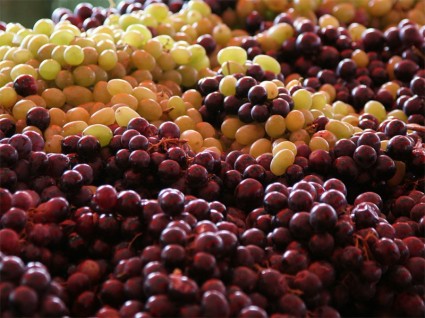
by Lorri | Apr 22, 2015 | UnCorked
Sometimes we forget that white wines are not necessarily made from white grapes.
Because the pigment is in the skin of the grape and not the pulp, white wines do not retain much color.
The grapes are generally pressed and skins are removed early in production, resulting in a light color, even if red grapes are used.
Champagne is a good example of this process. The famous bubbly is most often made from pinot noir (as red of a grape as they come), chardonnay and pinot meunier. Another example is Gewurztraminer, a grape that when you see it hanging on the vine is an awkward reddish gray color. One would never think this oddly colored grape would produce the beautiful golden color we see in the glass.
When a grape is pressed rather than crushed (like most red wines), the tannin from the skin is not released into the juice. This step in white wine making has the most impact, and unfortunately there are many aromatic substances we lose without the skin contact.
Lucky for us, there are a few grape varieties that hold many of the aromatic qualities in the pulp; Riesling and Gewurztraminer are among them, along with muscats. If you have ever focused on the smell of those wines, it’s easy to describe the glass as filled with layers of aromas. Chardonnay, pinot grigio and sauvignon blanc are generally less aromatic because their pulps are less intensely flavored.
These are a few wines showcasing the intense range of the aromatic complexity we can savor in white wines.
THE VALUES
- 2014 Meli Riesling, Chile (about $13 retail)
- 2014 Twisted River Riesling, Germany (about $12 retail)
THE SPLURGES
- 2014 Hugel Alsace Gewurztraminer, France (about $28 retail)
- 2014 Trimbach Gewurztraminer, France (about $28 retail)





